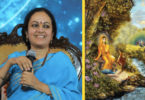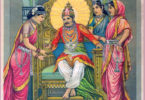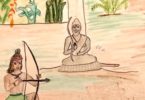2015 was a year when a lot of archaic notions were questioned. Books, movies and media in general moved away from age-old stereotypes and storytellers experimented with new ideas through a myriad of media channels, be it print or video. Indian mythology came under the scanner multiple times, and every facet was cross-examined and alternate endings and new definitions emerged. Underlying all this was the belief that Indian mythology, almost wholly penned by males and often a single writer, may have been highly biased to portray the party authoring it in a good light and to promote patriarchy.
Here are 8 such storytellers who created headlines for their re-telling of Indian mythology from different perspectives, offering food for thought.
1. Sujoy Ghosh – Ahalya
Sujoy Ghosh’s short film, Ahalya, featuring Radhika Apte and Soumitra Chatterjee was undoubtedly one of the most popular stories of 2015. A fresh take on the story of Ahalya, who is turned into stone by her husband Maharishi Gautam, for her suspected infidelity with the amorous God Indra from Ramayana, Sujoy Ghosh’s movie highlights how victim-blaming has its roots in Indian mythology, and is not a 21st century phenomenon.
2. Devdutt Pattanaik – My Gita
Devdutt Pattanaik is known for his unconventional interpretations and renditions of the untold stories from the Indian epics. My Gita is an illustration of the differing psyches that are prevalent in the society at any given time and that the same rules cannot be applied to everyone uniformly.
3. Kavita Kane – Sita’s Sister and Menaka’s Choice
Kavita Kane has a knack for re-telling Indian epics from a rarely explored perspective of the women in the stories. Although fictionalized, be it Karna’s Wife, or Sita’s Sister or Menaka’s Choice, the women in her books have a voice that is lacking in the original stories.
4. Sharath Komarraju – The Rise of Hastinapur
Winds of Hastinapur had explored the Mahabharata from the perspective of the women who played a pivotal role in laying the foundation of one of the greatest epics of our times. The Rise of Hastinapur takes the story further, again from the perspective of those women who shaped the epic as we know it. Komarraju’s adaptations are a refreshing change from the one by Ved Vyasa, where the role of women is highly marginalized.
5. Jagmohan Bhanver – The Curse of Brahma
Kamsa is portrayed as the antagonist in all stories about the birth and childhood of Lord Krishna. Jagmohan’s The Curse of Brahma, even though largely fictional, makes us wonder whether mythology is as black and white as we accept it to be.
6. Roopa Pai – The Gita
The Bhagavad Gita may seem a forbidding book to pick up for a weekend read, and you would probably not think of it as an ideal choice for a kids’ read-aloud session. However, when Krishna discharges his sermon to Arjun as a story, and names like Michael Jackson and The Beatles are peppered across the book, one is all ears for it, and even retain it. While stoics may disagree, Roopa Pai’s The Gita proves that epics are always interesting, and to all age groups, when told the right way.
7. Sanjay Patel – Sanjay’s Super Team
“Indian mythology is a bottomless pit” says Sanjay Patel, an animator at Pixar. It is no wonder that his short film, Sanjay’s Super Team, whose first look is out, portrays Hindu deities and protagonists from Indian mythology as superheroes. For Indian kids growing up abroad, trying to balance two cultures, Sanjay’s Super Team rewrites mythology in a way that appeals to their sensibilities.
8. Anand Neelakantan – Rise of Kali
Another author who questions the absoluteness of the stories in Indian mythology is Anand Neelakantan. With the Rise of Kali, the second part of the Ajaya series and sequel to Roll of The Dice, he has questioned people’s perception of the hero and the villain, by portraying the Pandavas as the villains and the Kauravas as the heroes of the saga.
Which storytellers do you think made a dent in perceptions of stories from Indian mythology in 2015? Let us know in the comments below.





What about Amish Tripathi’s The Scion of Ikhshaku?
The Scion of Ikshvaku is not a retelling, it’s completely fictional with only the characters from Indian mythology. This list contains of retellings of stories.
Delighted to find my book in this list. Thank you!
🙂